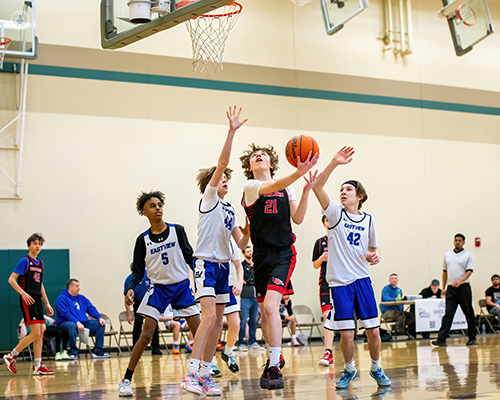How to keep your child’s knees healthy: Tips for parents of young athletes
Written in association with:Knee health is paramount for young athletes, who are particularly susceptible to injuries due to their sports activities and growing bones. Understanding common knee injuries, recognising when to seek medical attention, and exploring treatment options can thus help patients support their children in enjoying sports while minimising the risk of injuries. This article provides an expert guide.

What are common knee injuries in young athletes?
Knee injuries are prevalent among young athletes due to their active lifestyles and the physical demands of various sports. Frequent knee injuries in children and young people include:
Patellar tendonitis
Patellar tendonitis, commonly referred to as "jumper's knee," occurs when the patellar tendon – that connects the kneecap to the shinbone - becomes inflamed. This condition is common in athletes who participate in sports involving jumping, such as basketball and volleyball.
Osgood-Schlatter disease
Osgood-Schlatter disease is an overuse injury characterised by pain and swelling just below the kneecap, where the patellar tendon attaches to the tibia. This disease often affects adolescents experiencing growth spurts and is common in sports that involve running and jumping.
Knee sprains
Knee sprains occur when the ligaments supporting the knee are stretched or torn. This can happen during sudden movements, twists, or falls. Symptoms can include pain, swelling, and a sense of instability in the knee.
When should I seek medical attention for my child’s knee pain?
You should consult a paediatric orthopaedic surgeon about your child’s knee pain:
- If your child experiences knee pain that lasts more than a few days or worsens over time.
- If your child experiences significant swelling around the knee, especially if accompanied by bruising or redness.
- If your child can’t bear weight on the affected leg or has difficulty walking.
- If your child hears unusual popping or clicking sounds during knee movement, especially if associated with pain.
How are knee problems in children treated?
Treatment can vary depending on the type and severity of the injury. Both non-invasive and surgical options are available:
Non-invasive treatments
- RICE method: Allow time for rest and reduce all types of activities that cause knee pain. Apply ice to the affected area to alleviate swelling and pain. Additionally, use compression wraps or knee sleeves to help reduce swelling and offer support to the knee. While resting, encourage your child to elevate the affected leg to aid in reducing swelling.
- Physiotherapy: A physiotherapist can design a tailored rehabilitation program to strengthen the knee and improve flexibility, range of motion, and overall function.
- Medications: Over-the-counter pain relievers, like Ibuprofen, can help relieve pain and reduce inflammation.
Surgical options
In some cases, surgical intervention may be necessary. Surgical options can include:
- Arthroscopy: An arthroscopy is a minimally invasive procedure where a small camera is inserted into the knee joint to diagnose and treat various conditions, such as meniscus tears or loose fragments.
- Ligament repair or reconstruction: In cases of severe ligament injuries, such as ACL tears, surgery may be needed to repair or reconstruct the damaged ligament.
- Osteotomy: An osteotomy is a procedure that involves reshaping the bones around the knee to relieve pressure on the joint, commonly used in cases of misalignment.
What preventive measures can my child take to protect their knees?
Preventing knee injuries in young athletes involves a combination of proper training, technique, and lifestyle choices.
Encourage your child to engage in warm-up exercises before activities to boost blood flow to the muscles and prepare them for physical activity. After sports, cool-down exercises can help reduce muscle tightness and soreness.
Concentrate also on strengthening the muscles surrounding the knee, such as the quadriceps, hamstrings, and calves. Exercises such as squats, lunges, and leg raises can help build strength and stability.
Ensure your child wears appropriate footwear that provides adequate support and cushioning for their specific sport. Wearing the right gear can help minimise the risk of injuries.
Furthermore, monitor your child’s training schedule to prevent overtraining. Ensure they have enough rest days to recover from physical activities and avoid participating in multiple sports simultaneously.


